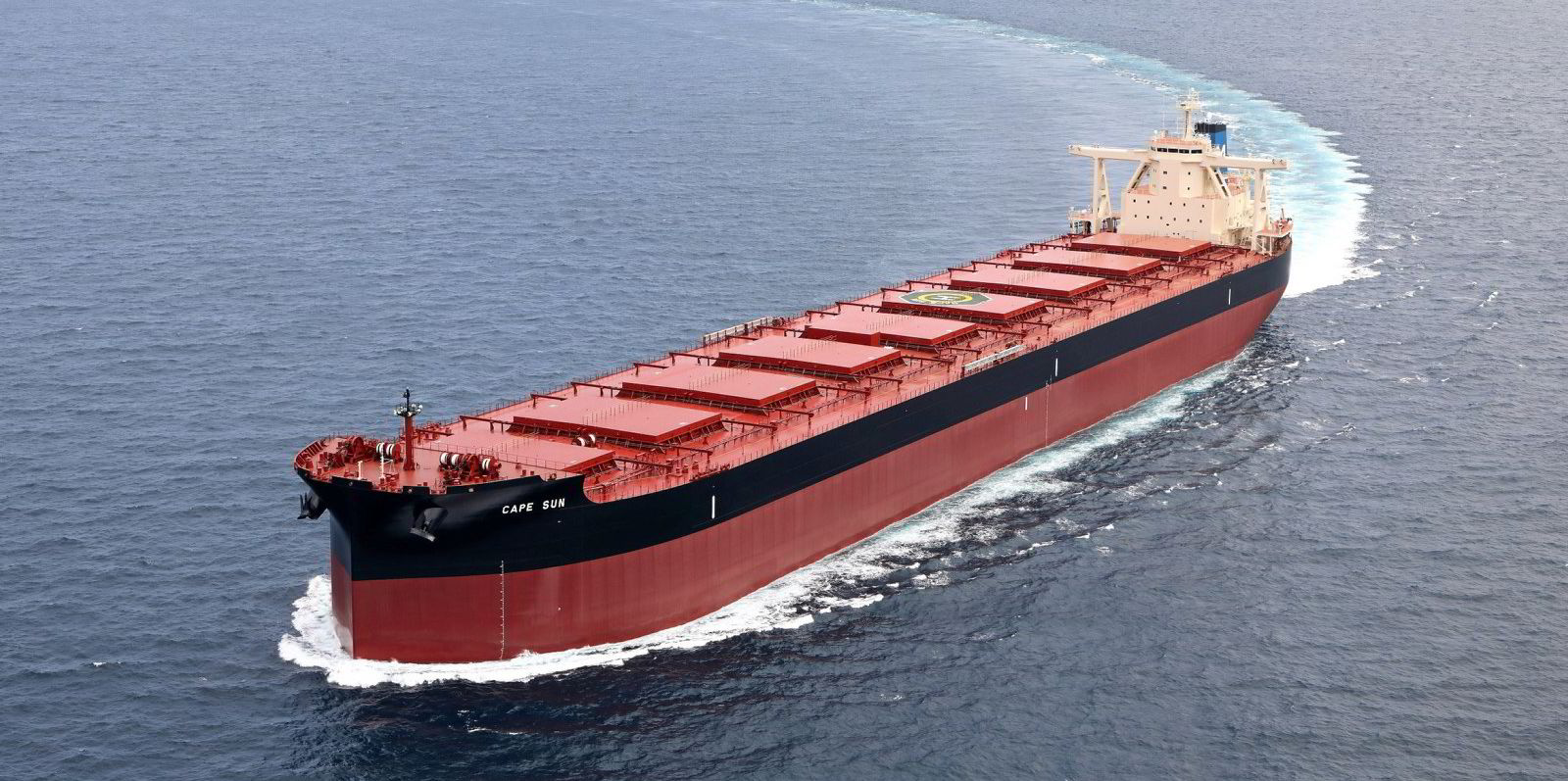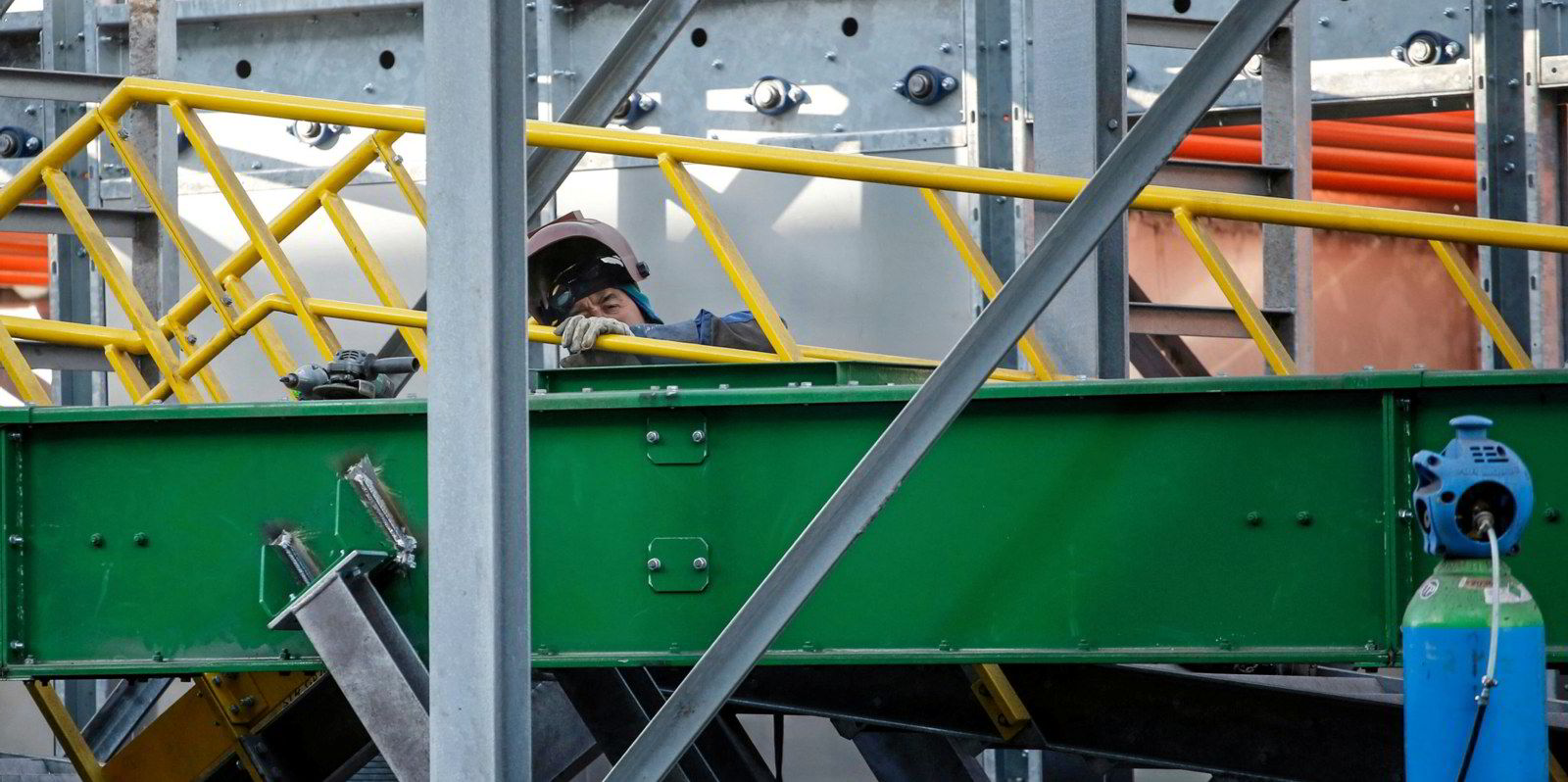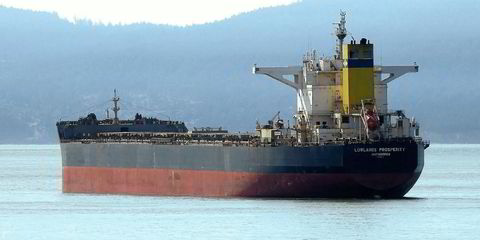The capesize bulker spot market plummeted by more than a third last week, but Clarksons Securities remained optimistic on the often volatile dry bulk sector.
The Baltic Exchange’s Capesize 5TC basket of spot-rate averages fell by an additional 6.1% on Monday, hitting approximately $17,300, marking its lowest point since late September. This decline follows a week in which the spot market plummeted by 37%, reaching nearly $18,500 on Friday.
“Typically, such market shifts prompt a cautious approach in chartering decisions,” Clarksons Securities analyst Frode Morkedal wrote in a note on Monday.
“There is one bright spot: vessel availability in the Atlantic remains limited. If trade volumes pick up, this could push rates higher.”
Monday’s fixtures reflected the ongoing decline in the capesize market.
Rio Tinto fixed two unnamed capesizes to ship 170,000 tonnes of iron ore each at between $8.45 and $8.50 per tonne from Dampier, Western Australia, to the Chinese port of Qingdao, with loading in mid-November.
This amount is marginally lower than the $8.60 per tonne paid by the Australian iron ore behemoth on Friday to have an unnamed capesize move 170,000 tonnes of ore on the same route, following the vessel’s unloading in mid-November.
Morkedal said last week’s market tumble is consistent with seasonal trends and is close to the five-year 5TC average. The futures market indicated that it may fall to $8,000 per day in next year’s first quarter, but that should be nothing to worry about, he said.
“All of the dry bulk companies we cover could weather a temporary downturn without major problems,” he said.
“Despite possibly having reached seasonal peak levels, the short-term outlook for capesize earnings remains positive.”

The futures market for capesizes declined on Monday, however, as November contracts on the 5TC fell 4.1% to $15,200 per day and December contracts slipped 1.1% to $14,200 per day, according to the exchange.
Morkedal noted that key capesize commodities such as iron ore and bauxite remain in high demand and coal restocking in India and elsewhere may also boost capesize freight rates.
Also, China approved CNY 1trn ($137bn) in government bonds last week in an effort to spur economic growth, as previously reported in TradeWinds.
“The market’s next moves will almost certainly be influenced more by supply-side factors and fleet positioning than by demand,” he wrote.
Scrubber-fitted capesizes should meet cash breakeven
Morkedal said the expected spot-rate drop in the first quarter should not hurt long-term valuations, though, because modern eco or scrubber-fitted capesizes could still meet cash breakeven levels by earning between $13,000 and $14,000 per day.
But not all analysts shared the optimism of Clarksons Securities, the investment banking arm of shipbroking giant Clarksons, noting that capesize forward freight agreement rates are lagging behind physical rates.
“Spot rates are still trading at a premium to FFAs, indicating further downside ahead,” Cleaves Securities wrote in a note on Monday.
Another broker declined to speculate on where the capesize market was headed, opting instead to share what he thought of last week’s rapid descent in the 5TC.
“Given this rally was driven by positional factors, it’s hardly surprising we have come off. However, the speed of the decline was both unexpected and impressive.”
By contrast, average spot rates for the smaller bulkers remained relatively stable on Monday as they continued to benefit from steady grain exports from the Americas.
The Panamax 5TC slipped 1.9% to just under $14,200 per day on Monday, while the Supramax 7TC fell 1.8% to $14,800 per day. The Handysize 7TC ticked down 0.4% to $12,000 per day.






